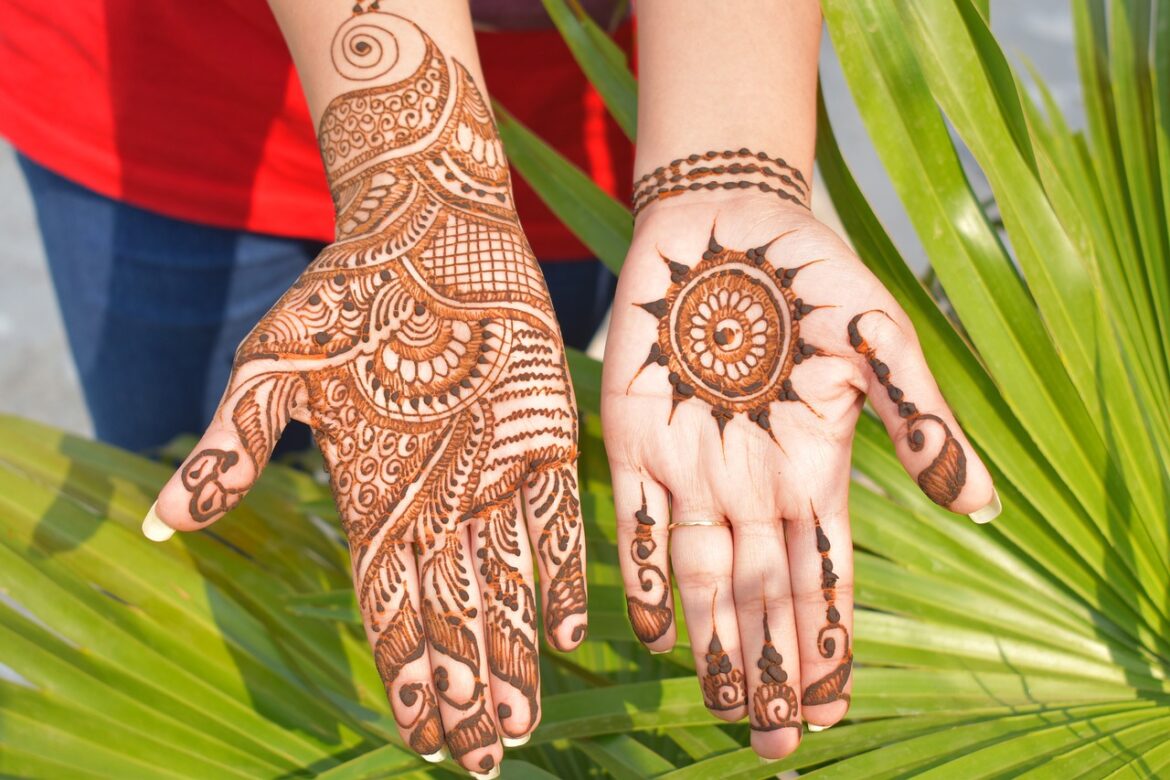What is Henna and Mehndi?
Henna is an orange plant-based dye used to decorate brides’ hands before their weddings. It is believed that darker hues bring greater happiness for a marriage.
Before getting mehndi applied, meet with your artist to discuss what you want. Additionally, stop drinking liquids and remain as still as possible to ensure a successful application of mehndi.
Meaning
Mehndi, or Mehendi paste, is a temporary body art consisting of colored paste made from leaves from Henna plants used to create decorative patterns on hands and feet. Usually lasting two weeks before becoming ineffective.
Henna is used as a mark of beauty and celebration. Usually applied at a special mehndi ceremony before weddings, this event is celebrated by women relatives of the bride by painting intricate designs on both hands and feet of their loved one.
Henna has been around since ancient Egypt, when Pharaohs wore it as protection from desert heat. Since henna is also capable of curing ailments and soothing pain, celestial elements are frequently included in henna designs such as peacock feathers or lotus blooms which symbolize divinity, beauty and rebirth.
Symbolism
Henna, or Mehndi, is a symbol of fertility. It is said that the darker her Mehndi becomes on her bridegroom’s hand, the deeper their love will grow between them.
Mehndi design ceremonies are also symbolic of good luck and blessings, serving as an enjoyable pre-wedding ceremony celebration at the bride’s home, usually consisting of family, music, laughter and delicious cuisine.
Grooms can often expect their hands to be decorated with intricate designs similar to those applied to brides, especially in certain parts of India. Henna has been used for thousands of years; its roots can be traced all the way back to Egypt where ancients used henna as a marker to commemorate special events and holidays, such as weddings, naming ceremonies and fasts such as Karwa Chauth, Teej and Diwali.
Techniques
Mehndi artists rely on an arsenal of tools when creating intricate patterns. This includes special paste, application bottles/cones with tips, syringes and dry brushes to achieve precise lines and shadings.
Some mehndi artists add essential oils such as lemon essential oil and eucalyptus oil to their paste, to produce darker staining effects. Other methods involve adding natural coloring ingredients such as coffee powder, beetroot juice or pine oil.
To ensure a longer lasting mehndi experience, instead of using soap or water to wash it off, use baby oil. This prevents chipped henna from flaking off quickly while helping darken quickly too. For optimal results it should also be applied frequently throughout the night in order to ensure mehndi stays in place and retains its color.
Styles
Students will research how mehndi designs vary between cultures and present their findings to small groups. They will use a marker to create original hand designs using thick, thin, squiggly or jagged lines with their marker tip – adding visual interest through this practice.
Arabic mehndi designs are intricate and often feature images of mosques, the moon and Islamic symbolism. Pakistani bridal mehndi also uses patterns with white spaces but tends to feature floral or symmetrical elements for its designs.
Indian bridal henna is known for featuring classic floral and paisley patterns with vines, often curvier in nature. Recent trends include using glitters or metallic dusts in designs as well as adding flowers or hearts into designs and creating Indo-Arabic styles that combine these two elements for an exquisite artistic effect.
Applications
Mehndi paste comes in both tubes and cones, with most mehndi artists employing small plastic cones with holes at their tips to apply it. Mehndi artists also utilize fine needles, toothpicks and syringes in order to create intricate designs on hands using mehndi.
Compounds extracted from mehendi leaves have been shown to exhibit anti-cancer and cytotoxic (cell-killing) activity,1 but more research needs to be conducted in this area. Furthermore, its leaves show liver protective, anti-oxidant, hepatoprotective (liver protective), and antioxidant activities; it has even been shown to prevent the formation of sickle-shaped red blood cells under certain circumstances3 however in severe cases such as sickle cell anaemia it should be diagnosed and treated by a medical professional




